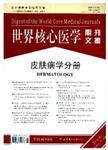追溯轻度脑外伤患者视空间注意力缺陷的恢复
Tracking the recovery of visuospatial attention deficits in mild traumatic brain injury作者机构:Department of Human Physiology Institute of Neuroscience University of Oregon Eugene OR United States
出 版 物:《世界核心医学期刊文摘(神经病学分册)》 (Digest of the World Core Medical Journals.Clinical Neurology)
年 卷 期:2006年第8期
页 面:44-45页
学科分类:1002[医学-临床医学] 100210[医学-外科学(含:普外、骨外、泌尿外、胸心外、神外、整形、烧伤、野战外)] 10[医学]
摘 要:The goal of the current investigation was to probe the deficits in the alerting, orienting and executive components of visuospatial attention in individuals who have recently suffered a mild traumatic brain injury (mTBI) and to assess the rate and degree of recovery for each of these components over a month postinjury. A group design was employed to assess and compare the performance of participants (12 males, 8 females; mean age: 21 ± 1.74 years) identified with mTBI relative to control subjects matched for gender, age, height, weight and activity level. Participants performed the attentional network test, designed to isolate the constituents of attention into alerting, orienting and executive components. Reaction times (RTs) and response accuracy were the main dependent variables. The results showed that the orienting and executive components were significantly affected by mTBI immediately after the injury, whereas the alerting component was not. Furthermore, participants with mTBI recovered from the deficits in the orienting component of attention within a week of their injury, whereas the deficits in the executive component remained throughout the month post- injury. In addition, the RT cost to generate accurate compared with inaccurate responses was significantly larger in participants with mTBI than in controls, and this difference was maintained throughout the I month testing period. These findings indicate that the regions of the brain associated with the orienting and executive components of visuospatial attention may be most susceptible to neural damage resulting from mTBI. Moreover, the lack of recovery in the executive component indicates that the degree and time course for recovery may be regionally specific.



